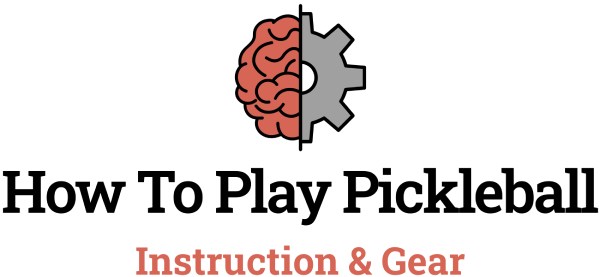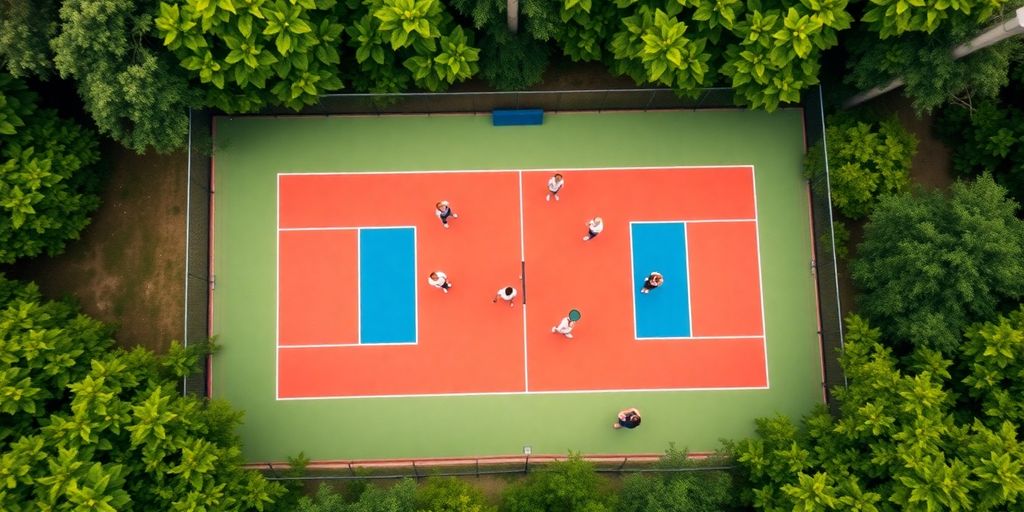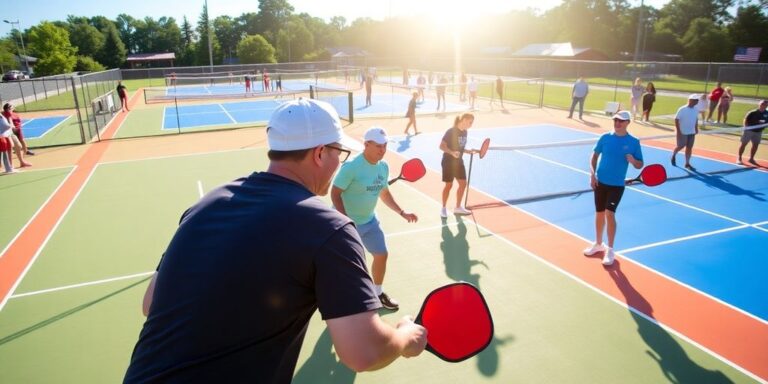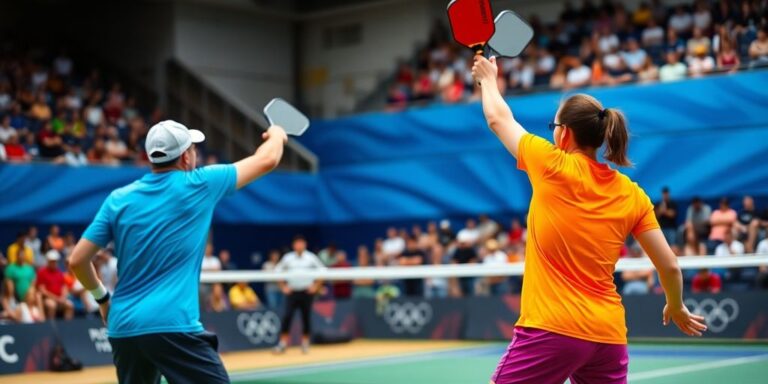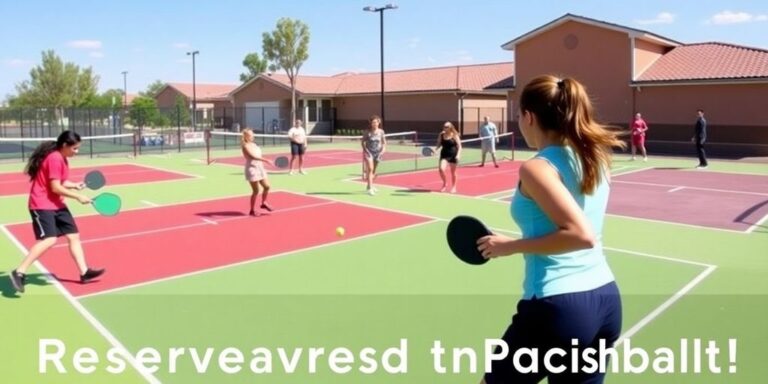If you’ve ever wondered where pickleball was invented, the answer is right here in Washington State. This quirky sport, which combines elements of tennis, badminton, and ping-pong, was born on Bainbridge Island in 1965. The story of its creation is as unique as the game itself, and it reflects a desire for family fun during a lazy summer weekend. Let’s dive into the history, evolution, and cultural impact of pickleball, and see what makes it so special.
Key Takeaways
- Pickleball was invented in 1965 on Bainbridge Island, Washington.
- The game was created by Joel Pritchard, Bill Bell, and Barney McCallum as a family activity.
- The first official pickleball court was built in 1967, and the sport quickly gained popularity.
- Pickleball has evolved to include specific rules like the no-volley zone, known as ‘the kitchen.’
- Today, pickleball is one of the fastest-growing sports in America, with a vibrant community and numerous tournaments.
The Birthplace of Pickleball
Bainbridge Island’s Role
Pickleball’s story begins on Bainbridge Island, Washington. This unassuming island is where the sport was born in 1965, forever changing the landscape of recreational sports. It wasn’t a grand plan or a corporate invention; it was a spontaneous creation born out of summer boredom and a lack of badminton equipment. The island’s laid-back atmosphere and community spirit fostered the perfect environment for this quirky sport to take root and grow. Today, Bainbridge Island proudly embraces its identity as the home of pickleball, welcoming visitors and players alike to experience the sport’s origins.
The Founders of the Game
The game’s creation is credited to Joel Pritchard, a congressman from Washington, and his friend Bill Bell. One summer day, after a round of golf, they returned to Pritchard’s home to find their kids bored. They tried to set up a badminton game, but they couldn’t find all the equipment. So, they improvised. Barney McCallum joined them the following weekend, and together, the three men crafted the initial rules of pickleball. Their goal was simple: to create a game the whole family could enjoy. The story of pickleball’s invention is a testament to the power of improvisation and the simple joy of playing together. The founders’ vision of a fun, accessible game for all ages continues to drive the sport’s popularity today. You can even visit the history museum to see some of the original artifacts.
Initial Gameplay and Equipment
Initially, pickleball was played with whatever was available: table tennis paddles and a perforated plastic ball. The net was set at badminton height, but it was soon lowered as they discovered the ball bounced well on the asphalt. The equipment evolved over time, with wooden paddles crafted in garages and adjustments made to the ball. The first permanent pickleball court was built in 1967 in the backyard of Bob O’Brian, a friend and neighbor of Pritchard. The early days of pickleball were marked by experimentation and adaptation, as the founders refined the rules and equipment to create a more enjoyable and challenging game.
The essence of pickleball’s early days lies in its simplicity and adaptability. It wasn’t about fancy equipment or complex rules; it was about having fun and creating a game that everyone could play. This spirit of inclusivity and improvisation continues to define the sport today.
Here’s a quick look at the initial equipment:
- Wooden Paddles
- Perforated Plastic Ball (similar to a wiffle ball)
- Badminton Net (initially at badminton height, then lowered)
The Evolution of Pickleball Rules
Pickleball, like any sport, has seen its rules evolve since its inception. It’s interesting to see how a game born out of boredom and improvisation has developed a structured set of regulations. Let’s take a look at how the rules came to be and how they’ve changed over time.
Establishing the First Rules
So, the story goes that in the summer of ’65, Joel Pritchard and Bill Bell were trying to entertain some restless kids. They grabbed some ping pong paddles and a wiffle ball, and the game began. But it wasn’t quite pickleball yet. They started with badminton net height, but soon realized the ball bounced better on the asphalt.
- The net was lowered to 36 inches.
- Barney McCallum joined the following weekend.
- The three men created the first pickleball rules.
The goal was simple: create a game the whole family could enjoy. The initial rules were pretty basic, focusing on serving, scoring, and basic gameplay. It was all about fun and accessibility.
The No-Volley Zone
Ah, the kitchen! Or, as it’s officially known, the no-volley zone. This is one of the most distinctive features of pickleball. The no-volley zone prevents players from smashing the ball right at the net. It forces players to play strategically and with finesse. It adds a layer of strategy that makes the game more interesting. It’s a rule that really defines pickleball.
Changes Over the Years
Over the years, the rules have been tweaked and refined to improve gameplay and ensure fairness. In 1978, a book was published including information about pickleball. By 1982, Sid Williams began organizing tournaments in Washington. The sport’s rise has led to more formal regulations. Here are some examples of how the rules have changed:
- Serving rules have been adjusted to prevent unfair advantages.
- Equipment standards have been put in place to ensure consistent play.
- Scoring systems have been modified to speed up games and make them more exciting.
| Rule Category | Original Rule | Current Rule | Reasoning |
|---|---|---|---|
| Serving | Underhand, any height | Underhand, below the waist | Reduce server advantage |
| Scoring | Win by 1 | Win by 2 | Eliminate ties |
| Paddle Size | No restrictions | Restrictions on size and material | Ensure fair play |
Pickleball’s Growth Beyond Washington
Expansion to Other States
Pickleball didn’t stay confined to Washington for long. After its start on Bainbridge Island, the game began to spread, slowly at first. In the 1970s, you could even buy pickleball in a box set, and it was pitched to schools as a gym class activity. This is where pickleball started to gain traction outside of the Pacific Northwest.
Popularity in Schools
Pickleball’s introduction into school gymnasiums across the U.S. played a big role in its early expansion. It was an easy game to learn, didn’t require a ton of specialized equipment, and could be played indoors or outdoors. This made it a good fit for physical education programs looking for something new and engaging. It helped get the sport in front of a younger audience, planting the seeds for its future growth. It’s interesting to see how something that started as a backyard game became a state sport.
Emergence of Tournaments
As more people started playing pickleball, the desire for organized competition grew. This led to the emergence of local and regional tournaments. These events provided a platform for players to test their skills, connect with other enthusiasts, and help raise the profile of the sport. These tournaments are now a staple of the pickleball community, offering opportunities for players of all levels to compete and engage with the community.
The growth of pickleball tournaments really helped to formalize the sport. It created a sense of community and gave players something to strive for. It wasn’t just a casual backyard game anymore; it was becoming a serious sport with a competitive scene.
Cultural Impact of Pickleball

Community Engagement
Pickleball has really taken off as a way to bring people together. It’s not just a sport; it’s a social event. The ease of learning and the relatively low physical demands mean people of all ages and fitness levels can participate. You see communities organizing leagues, setting up local pickleball courts, and hosting social gatherings centered around the game. It’s a fantastic way to meet new people and stay active.
- Local clubs are popping up everywhere.
- Community centers are adding pickleball to their activity lists.
- Even retirement communities are getting in on the action.
Pickleball’s inclusive nature is a big part of its appeal. It doesn’t matter if you’re a seasoned athlete or someone who hasn’t picked up a racket in years; you can still have fun and get a good workout. This accessibility is what makes it such a great community builder.
Pickleball in Popular Media
It’s hard to miss the buzz around pickleball these days. Celebrities are playing it, it’s showing up in TV shows, and there are even articles about it in major publications. This increased visibility is helping to push pickleball into the mainstream. It’s not just a niche sport anymore; it’s becoming a part of the cultural conversation. The sport’s accessibility is a big draw for celebrities looking for a fun way to stay active.
Influence on Other Sports
Pickleball’s rise is also having an interesting effect on other sports. Some tennis clubs are converting courts to pickleball because it’s more economical. You can fit multiple pickleball courts in the space of one tennis court, which means more people can play at the same time. This shift is causing some debate, but it also shows how pickleball is changing the landscape of racket sports. It’s also influencing how people think about recreational activities and community sports programs.
| Sport | Impact |
|---|---|
| Tennis | Court conversions, increased competition |
| Badminton | Shared skills and strategies |
| Table Tennis | Similar paddle and ball dynamics |
Visiting the Home of Pickleball
Bainbridge Island isn’t just where pickleball was born; it’s a place where you can immerse yourself in the sport’s history and culture. From playing on local courts to exploring historical exhibits, a visit here is a must for any true pickleball enthusiast. It’s a chance to connect with the roots of the game and experience the welcoming community that has embraced it since the beginning.
Tourist Attractions on Bainbridge Island
Beyond pickleball, Bainbridge Island offers a variety of attractions. You can explore the beautiful Bloedel Reserve, a stunning garden and woodland area, or visit the Bainbridge Island Museum of Art. For a taste of local history, check out the Bainbridge Island Historical Museum, where you can learn about the island’s past, including its connection to the timber industry and its role during World War II. Don’t forget to take a stroll through Winslow, the island’s charming downtown area, filled with shops, restaurants, and art galleries. It’s a great way to spend an afternoon after a morning on the pickleball courts.
Local Pickleball Courts
Battle Point Park is home to the "Founder’s Courts", a dedicated pickleball facility. It’s about 15 minutes from downtown Bainbridge. You can often find friendly locals willing to play a game or offer tips. There are also other pickleball clubs and courts scattered around the island, offering various playing surfaces and levels of competition. Check out local community centers or recreation facilities for more options. Beacon Park is hosting a pickleball event on May 16, 2025, with team tournaments and open play. It’s a great opportunity to join the excitement and meet other players.
Historical Exhibits and Artifacts
To truly understand pickleball’s origins, a visit to the Bainbridge Island Historical Museum is essential. Here, you’ll find exhibits showcasing the original wooden paddles, early rulebooks, and photographs documenting the game’s evolution. The museum also organizes an annual "Founders Tournament," attracting players from across the country. It’s a unique opportunity to celebrate the sport’s history and connect with fellow enthusiasts in the place where it all began.
Visiting Bainbridge Island offers a unique opportunity to step back in time and experience the origins of pickleball firsthand. The island’s welcoming community, combined with its rich history and beautiful scenery, makes it a destination that any pickleball lover should add to their bucket list. It’s more than just a game; it’s a cultural phenomenon with roots deeply embedded in this charming island.
The Future of Pickleball

Professional Leagues
The world of professional pickleball is really starting to take shape. With the United Pickleball Association now overseeing both the PPA and MLP, things are getting more organized. This means bigger tournaments, more sponsorships, and, of course, more money for the pros. It’s not just about the prize money, though. It’s about building a sustainable career for these athletes. We’re seeing more full-time players, better training facilities, and a higher level of competition overall. The sport is becoming more professionalized, and that’s exciting to watch.
Youth Involvement
Pickleball isn’t just for retirees anymore. More and more young people are picking up a paddle, and that’s great news for the sport’s future. Schools are starting to add pickleball to their PE programs, and there are even youth leagues popping up all over the place. This early exposure is key to building a new generation of players who will keep the sport alive and growing. Plus, it’s just a fun way for kids to stay active and learn a new skill.
Here are some reasons why youth involvement is important:
- It ensures the long-term growth of the sport.
- It promotes physical activity and healthy habits among young people.
- It creates a pipeline of talent for professional leagues.
Global Expansion
Pickleball’s popularity isn’t limited to the United States. It’s spreading like wildfire around the world. You can find courts in Europe, Asia, and South America, and the number of international players is growing every year. This global expansion is being driven by a few factors, including the sport’s accessibility, its social nature, and its relatively low cost. As more countries embrace pickleball, we can expect to see even more international tournaments and a more diverse range of players competing at the highest levels.
The global expansion of pickleball is not just about adding more players; it’s about building a global community. As the sport spreads, it brings people from different cultures and backgrounds together, fostering understanding and camaraderie. This is a powerful force for good, and it’s one of the things that makes pickleball so special.
Pickleball is growing fast, and its future looks bright! With more people discovering the fun and excitement of the game, we can expect to see new courts, tournaments, and even professional leagues popping up everywhere. If you want to stay updated on all things pickleball, visit our website for the latest news and tips. Join the pickleball movement today!
Wrapping Up the Journey to Pickleball’s Roots
So there you have it! Pickleball kicked off in 1965 on Bainbridge Island, Washington, thanks to a couple of bored dads and some kids looking for fun. What started as a simple game with makeshift paddles has turned into a nationwide craze. Today, millions are playing, and it’s even a big deal in tournaments. If you ever get the chance to visit Bainbridge Island, you’ll see where it all began. Just remember, while the sport has exploded in popularity, it’s the spirit of family fun that started it all. So grab a paddle and join in the fun!
Frequently Asked Questions
What year was pickleball invented?
Pickleball was invented in 1965 on Bainbridge Island, Washington.
Who created pickleball?
Joel Pritchard, Bill Bell, and Barney McCallum are credited with creating pickleball.
What was the original equipment used in pickleball?
The first game used table tennis paddles and a plastic ball, played on a badminton court.
What is the no-volley zone in pickleball?
The no-volley zone, also known as ‘the kitchen’, is an area near the net where players cannot hit the ball.
How did pickleball become popular in schools?
In the 1970s, pickleball was sold as a kit for gym classes in elementary schools, helping it gain popularity.
Is pickleball growing in popularity?
Yes, pickleball is now one of the fastest-growing sports in the U.S. and is expanding globally.
